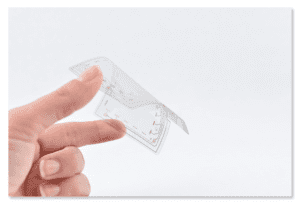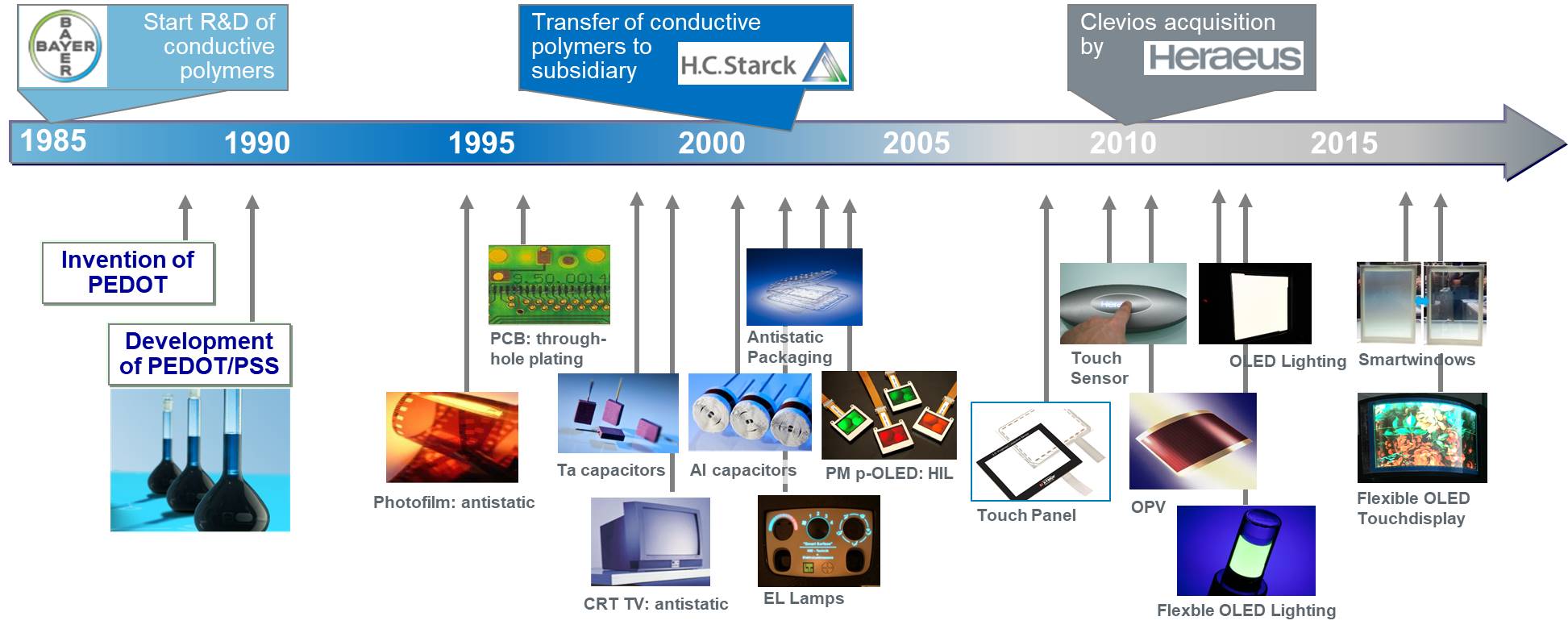At Xymox, we’re deeply involved in the innovative world of capacitive sensors, and a key component of our technology is PEDOT, or more specifically, PEDOT:PSS (Poly(3,4-ethylenedioxythiophene):polystyrene sulfonate). We source a film version of this material from Kodak, known as KODAK ESTAR Highly Conductive (HCF) Films, which we use to create transparent sensors for displays. Additionally, we utilize a screen-printed form supplied by Heraeus, called Clevios, for making translucent sensors that are perfect for backlighting applications. Interestingly, it’s Kodak that also coats Heraeus Clevios PEDOT, keeping the production within a close-knit circle.
So, what exactly is PEDOT? It might sound like a complex term, but it’s a fascinating material in the world of science. PEDOT is a flexible, transparent material that, unlike many others, is also conductive. When we apply it in liquid form to different surfaces, it dries into a highly flexible state while retaining its conductive properties.

PEDOT’s been around since the late ’80s. It first popped up as an anti-static coating for photographic films. Remember those old-school films running through projectors at 24 frames per second? They used to create a ton of static. So, to keep the projectionist from getting a nasty shock, they coated the film with PEDOT. Fast forward to today, and while people are not using as much photographic film, PEDOT is still a big deal, especially for anti-static coatings in packaging, keeping electronic components safe.
The unique properties of PEDOT make it a notable player in making electrolytic capacitors, which you’ll find in just about every electronic device. You can find PEDOT used in applications like OLEDs for displays and lighting, photovoltaic cells for solar energy, smart windows, and, of course, our capacitive sensors at Xymox.
PEDOT’s unique combination of flexibility and conductivity continues to open new doors in various industries. It’s a material that’s not just part of our present but will also play a significant role in our future, finding new applications and remaining a key player in material science and technological advancements.
The history of PEDOT courtesy of Heraeus.

